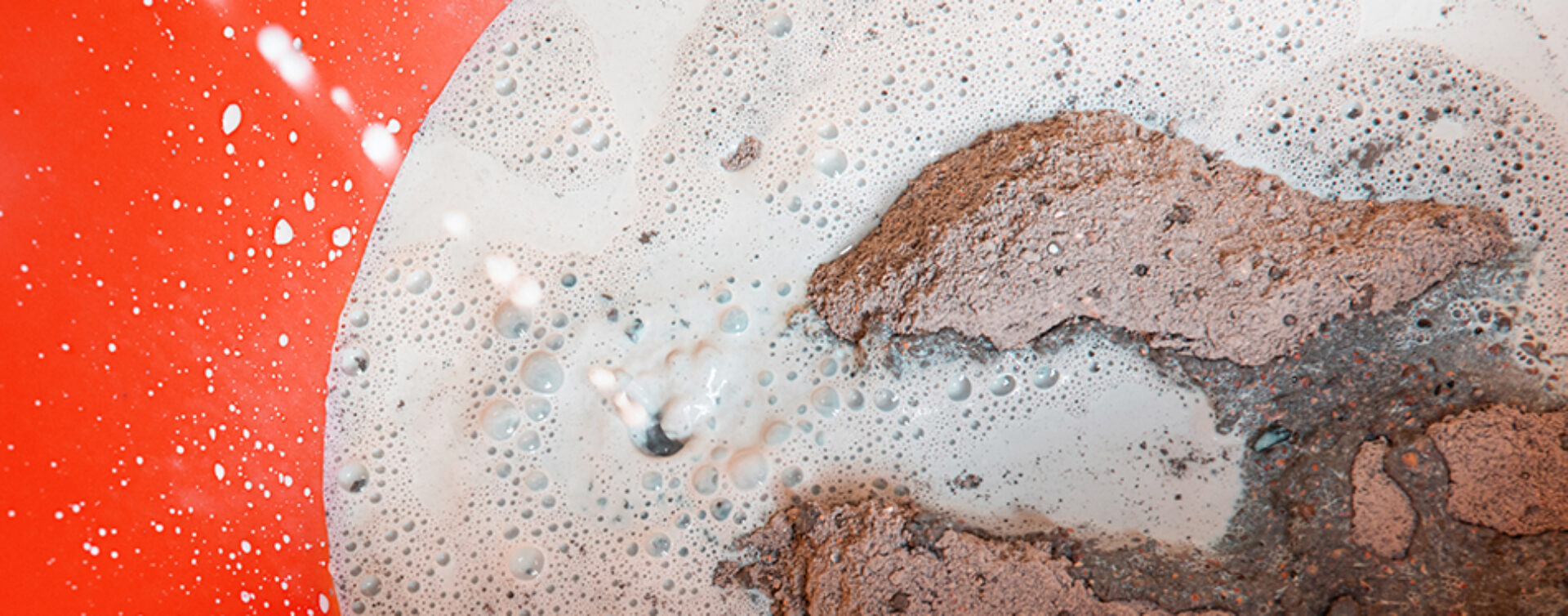Neoplast Grip
Modifier for cement and hydraulic lime based on special latex, highly saponification-resistant, flexibilising and strongly adhesive effect.

Modifier for cement and hydraulic lime based on special latex, highly saponification-resistant, flexibilising and strongly adhesive effect.

Discover more
A modifier for cement and hydraulic lime based on specifically formulated latexes, resistant to saponification and the action of water, highly adhesive, reducing the water/cement factor while giving the mix excellent thixotropy.
In all applications with Neoplast Grip, careful attention must be paid to the preparation of the substrate. The substrate must be clean, sound, free of all traces of oil, grease, residues of release agents, anti-evaporating agents or paints, and suitably brightened. Loose particles and patinas of cement must be carefully removed. The substrate must also first be wetted until completely saturated. In all applications described below, the general rules of proper composition and application of mortars and concretes must be scrupulously observed:
After laying plasters, coatings and renovations laid with mortars modified with Neoplast Grip, these must be kept moist for a few days.
Particular uses
A. Resurfacing for plasters (rendering)
The following volumes are mixed:
2-3 parts live sand (preferably 0/4)
1 part lime:cement 1:1
1 part by volume of Neoplast Grip is diluted with 2 parts by volume of water.
The lime:cement – sand mixture is mixed with diluted Neoplast Grip until a mortar of a consistency suitable for trowel application is obtained as a spray (18% – 20%).
As soon as the sparge has set for the first time, the normal or water-repellent plaster is applied with NEANTOL.
B. Repairs, carryovers and castings
For thin repairs and filler concrete, an addition of approx. 10% Neoplast Grip by weight of the mortar binder is recommended. This percentage is achieved by previously diluting 1 part by volume of Neoplast Grip with 4 parts by volume of water and mixing mortar with the diluted Neoplast Grip.
C. Sealing mortars
Since in this case it is very important that the sealing mortar has as little shrinkage as possible, a homogenous but very stiff mortar must be prepared.
Mortar composition
1 part by volume of cement
3 parts by volume of sand (the grain size will depend on the size of the joint, crack, cavity, etc. to be sealed).
Mixing solution
1 part by volume of Neoplast Grip
4 parts by volume of water
D. Bonding of tiles
Using Neoplast Grip in combination with the powder adhesive PIASTRELLITE MASTER PLUS results in a waterproof, strongly adhesive bed with good chemical resistance (for swimming pools, industrial floor and wall tiles, etc.). Mixing PIASTRELLITE MASTER PLUS with NEOPLAST GRIP diluted 1:1 results in an adhesive bed that meets the C2 requirements of EN 12004. If the S1 or S2 specification of EN 12002 is also required, we recommend the use of our ANTOL FLEX (see relevant data sheet).
Dilute 1 part by volume ofNeoplast Grip with 1 part by volume of water.
PIASTRELLITE MASTER PLUS is mixed with 28% Neoplast Grip diluted as above.
The instructions for using PIASTRELLITE MASTER PLUS are followed.
The application of the mixture must be abundant in order to create a continuous and therefore waterproof adhesive bed. In the case of particularly demanding applications such as swimming pools, drinking water tanks, etc. and of tiles with a very profiled intrados, it is essential to spread the adhesive also on the reverse side of the tile so as not to have any gaps (‘buttering-floating’ system).
In unopened original packaging and when stored at temperatures between +5 °C and +35 °C, the product is stable for at least 12 months.
Neoplast Grip must be stirred until completely homogenous before use. Mortars modified with Neoplast Grip must not be applied below +5 °C.
| Code | Packaging | Packaging size | Pallet | Barcode |
|---|---|---|---|---|
| 6503 | canister | 5kg |
32 canisters
|
| PARAMETER | VALUE |
| Colour | white |
| Density mass (sec. ISO 28111) | 1,02 kg/l |
| Dry residue (sec. MIT 01*) | 31% |
| pH (sec. ISO 4316) | 8 |
| Chloride content (sec. MIT 17*) | < 0,01% |
(*) Torggler Internal Methods (MIT) are available on request.
| APPLICATION | CONSUMPTION |
| Repairing plaster (rendering) | 200 g – 400 g/m2 |
| Repairs, reinstatements and castings | 200 g – 400 g/m2 |
| Sealing mortar | 100 g – 200 g/kg of cement |
| Tile bonding (with PIASTRELLITE MASTER PLUS) | 300 g – 700 g/m2 |
Contact our team for personalized support and product guidance.